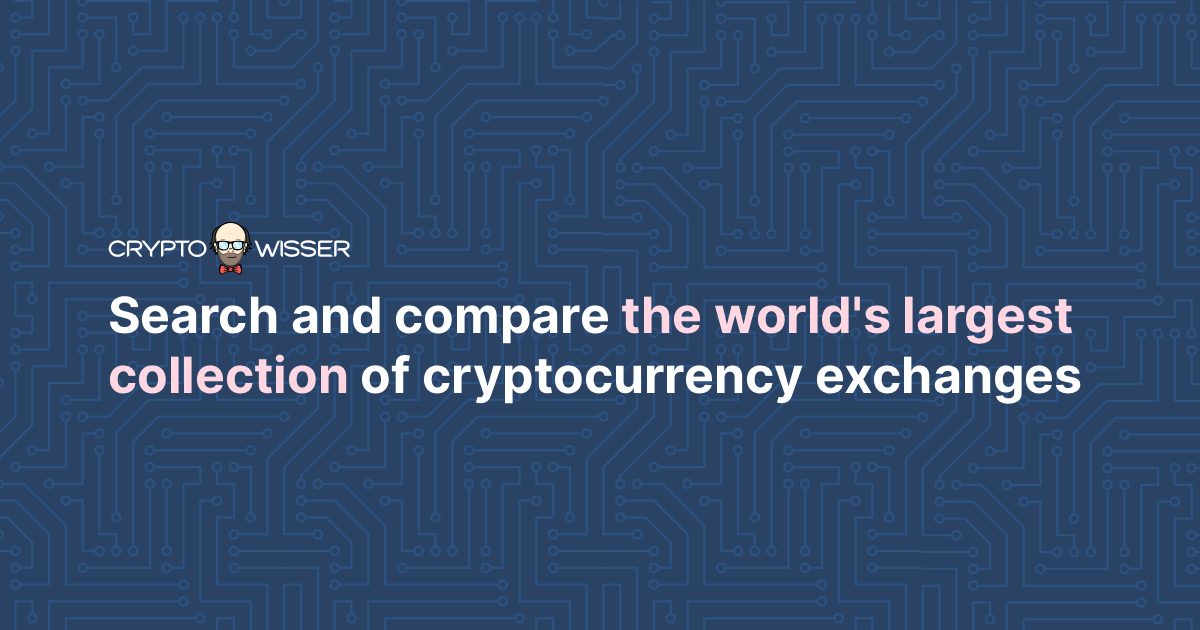Cryptocurrencies markets are unregulated services which are not governed by any specific European regulatory framework (including MiFID) or in Seychelles. Therefore, when using our Cryptocurrencies Trading Service, you will not benefit from the protections available to clients receiving MiFID regulated investment services, such as access to the Cyprus Investor Compensation Fund (ICF)/the Financial Services Compensation Scheme (FSCS) and the Financial Ombudsman Service for dispute resolution, or the protections available under Seychelles regulatory framework (as applicable).< https://test.com/ /p>
Gemini is another big name in the cryptocurrency exchange sphere. Founded in 2014 by none other than the Winklevoss twins, Gemini has managed to solidify its position in the charts with more than USD 175 million in trading volume generated. Not only that, but the Winklevoss brothers also launched the Gemini Dollar token .
A blockchain is a decentralised digital ledger where encrypted data can be transferred securely, making it nearly impossible to duplicate or counterfeit. This ledger is the foundation of any cryptocurrency transaction.
One of the most popular P2E games is Axie Infinity, a Pokémon-inspired game. Players collect Axies (NFTs of digital pets), breed and battle them against other players to earn Smooth Love Potion (SLP) — the in-game reward token. This is extremely popular in developing countries like the Philippines, where players can earn a decent income. Players in the Philippines can find out the SLP value today and cash out their earnings on crypto exchanges that support the SLP trading pair — such as Binance.

What is cryptocurrency mining
Bitcoin mining is a network-wide competition to generate a cryptographic solution that matches specific criteria. When a correct solution is reached, a reward in the form of bitcoin and fees for the work done is given to the miner(s) who reached the solution first.
The newly formed block now contains a hash output or signature that begins with a specific number of zeros combined with random letters and numbers. The hash output depends on the data inside the block, which is the hash input. Inside the block header is also a nonce, the number a miner must match to solve the block and access the transactions within the block. Nonce is an abbreviation for “number only used one.”
The mining process is what you may have heard called proof-of-work (PoW)—the work done to generate the winning hash is viewed as proof the miner validated the transactions in the block, so it’s called proof-of-work.
Another incentive for Bitcoin miners to participate in the process is transaction fees. In addition to rewards, miners also receive fees from any transactions contained in that block. When Bitcoin reaches its planned limit of 21 million (expected around 2140), miners will be rewarded with fees for processing transactions that network users will pay. These fees ensure that miners still have the incentive to mine and keep the blockchain network going. The idea is that competition for these fees will cause them to remain low after halving events are finished.
The main issue at the heart of the Bitcoin protocol is scaling—the blockchain’s ability to handle more work efficiently. Though Bitcoin miners generally agree that something must be done to address scaling, there is no consensus on how to do it.
Cryptocurrencies
Any private individual or company that knows how to write a program on a blockchain can technically create a cryptocurrency. That blockchain can be an existing one. Ethereum and Binance Smart Chain are popular blockchain platforms for such ends, including smart contracts within Decentralized Finance (DeFi). The ease of crypto creation allows some individuals to find solutions to real-world payment problems while others hope to make a quick profit. This explains why some crypto lack utility. Meme coins such as Dogecoin – named after a Japanese dog species – are an infamous example, with Dogecoin’s creator coming out and stating the coin started as a joke.
Based on 24 hour trading volume, stablecoin Tether outpaced Ethereum and Bitcoin in January 2024. This is somewhat similar to a market cap league table of more than 100 cryptocurrencies — including ones for DeFi, NFT and stablecoins. The two virtual coins were the only ones to reach over 100 billion U.S. dollars, with Ethereum following by around one half this amount. Does this mean that Bitcoin gets traded more than Ethereum? Not necessarily, as the daily transactions of Ethereum tend to be significantly higher than that of Bitcoin.
Meme coins are but one group of cryptocurrencies. Other types include altcoins, utility tokens, governance tokens, and stablecoins. Altcoins are often measured against Bitcoin, as this refers to all crypto that followed after Bitcoin – the first digital currency ever created. Utility tokens and governance tokens are somewhat connected to NFTs and the metaverse. A specific example is the MANA cryptocurrency, which allows real estate purchases in the Decentraland metaverse. Stablecoins refer to the likes of Tether, which are pegged to a real-world asset like the U.S. dollar. Such coins are meant to be less volatile than regular cryptocurrency.
Crypto.com describes it completely revamped its methodology in July 2021 as opposed to its previous work from May 2020 – due to the acceleration of the crypto world. It remarks that it now uses on-chain data for Bitcoin and Ethereum, counting the number of on-chain deposit adresses found within the largest coin exchanges. That said, the source does openly state that its figures are “a proxy only and subjected to various limitations and caveats”.The numbers shown here from CJBS were collected by the source from “longitudinal account and user data of both small and larger service providers from publicly available sources such as press releases, news articles, company websites, and public forums. This dataset was combined with survey data from participating platforms and projects from 47 countries.”CJBS mentions the figures provided are the “lower-bound of the global cryptoasset unique user base” and adds the following information: “The analysis does not capture all accounts at service providers since no data was available for some major platforms (e.g. in China) or individuals who do not use service providers. Together, these would contribute to an underestimation of total users. On the other hand hand, there are no easy means to identify users with accounts at multiple service providers – a practice that would contribute to an overestimation. Overall, there are reasons to believe that the underestimation factors outweigh the overestimation factors, which suggest that the current figure is a conservative lower-bound estimate.”

Any private individual or company that knows how to write a program on a blockchain can technically create a cryptocurrency. That blockchain can be an existing one. Ethereum and Binance Smart Chain are popular blockchain platforms for such ends, including smart contracts within Decentralized Finance (DeFi). The ease of crypto creation allows some individuals to find solutions to real-world payment problems while others hope to make a quick profit. This explains why some crypto lack utility. Meme coins such as Dogecoin – named after a Japanese dog species – are an infamous example, with Dogecoin’s creator coming out and stating the coin started as a joke.
Based on 24 hour trading volume, stablecoin Tether outpaced Ethereum and Bitcoin in January 2024. This is somewhat similar to a market cap league table of more than 100 cryptocurrencies — including ones for DeFi, NFT and stablecoins. The two virtual coins were the only ones to reach over 100 billion U.S. dollars, with Ethereum following by around one half this amount. Does this mean that Bitcoin gets traded more than Ethereum? Not necessarily, as the daily transactions of Ethereum tend to be significantly higher than that of Bitcoin.
Cryptocurrency list
Crypto prices are calculated by averaging cryptocurrency exchange rates on different cryptocurrency trading platforms. This way, we can determine an average price that reflects cryptocurrency market conditions as accurately as possible.
A distributed ledger is a database with no central administrator that is maintained by a network of nodes. In permissionless distributed ledgers, anyone is able to join the network and operate a node. In permissioned distributed ledgers, the ability to operate a node is reserved for a pre-approved group of entities.
Cryptocurrency exchanges provide markets where cryptocurrencies are bought and sold 24/7. Depending on the exchange, cryptocurrencies can be traded against other cryptocurrencies (for example BTC/ETH) or against fiat currencies like USD or EUR (for example BTC/USD). On exchanges, traders submit orders that specify either the highest price at which they’re willing to buy the cryptocurrency, or the lowest price at which they’re willing to sell. These market dynamics ultimately determine the current price of any given cryptocurrency.
A blockchain is a type of distributed ledger that is useful for recording the transactions and balances of different participants. All transactions are stored in blocks, which are generated periodically and linked together with cryptographic methods. Once a block is added to the blockchain, data contained within it cannot be changed, unless all subsequent blocks are changed as well.
Bitcoin is the oldest and most established cryptocurrency, and has a market cap that is larger than all of the other cryptocurrencies combined. Bitcoin is also the most widely adopted cryptocurrency, and is accepted by practically all businesses that deal with cryptocurrency.
